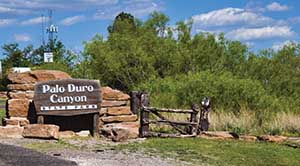When choosing what kind of plants to put down in your yard, you likely focus on the what and the where. After all, a beautiful plant in a prime location enhances curb appeal and even bragging rights.
You may pay less attention though to understanding your plant’s hardiness zone and all the ramifications that come with it. To help ensure your plants don’t just survive, but thrive, the experts at lawn care equipment manufacturer Exmark are sharing the following insights about plant hardiness:
What Is Plant Hardiness?
The secret to growing healthier plants is called plant hardiness. Plant hardiness is the ability of a plant to survive adverse growing conditions such as drought, flooding, heat, and cold. Ever watched with frustration as a late-season temperature dip leaves your beautiful buds with a serious case of frostbite? That’s why plant hardiness zones were developed.
American farming contributes billions of dollars to the gross national product every year, which is one reason why the USDA has long monitored weather data. If determining when the average final frost may occur for every region in the country is worth billions, what could that same knowledge mean for your garden? Well, choosing plants with hardiness levels appropriate to specific planting zones gives you the best chance of gardening and landscaping success.
What Is My Growing Zone?
The United States is divided into 13 zones. Zones 1–6 being the coldest, and 7–13 the warmest. Zone 1 averages -60 degrees F while zone 13 never drops below 70 degrees F. A general guideline is to plant anything designated for your zone or lower, but never higher. Know what zone you live in, and be sure to always check the tag on the back of the plant or seed pack before planting anything.
Perennials Versus Annuals
There’s a reason you see palm trees in Miami, not Minnetonka, MN. In the case of perennials, it’s not about when the first frost is, but how cold it gets, and whether that plant can survive and thrive through winter.
Plant hardiness zones are less important however when it comes to annuals. Because these plants are only meant to last the length of one growing season; waiting until after the average first frost date will save you from having to re-plant. Know that even if your plant survives the frost, it may never match the photo you saw advertised at the nursery.
Planting Zone Rule of Thumb
Plant hardiness zone maps are, well, all over the map. Consider the number assigned to your zip code as a starting point. You may live right at the break between one zone and the other. Remember that it’s better to guess too low, than too high. In the South, the heat can put real stress on a plant not made for it. Your particular geography can also affect your hardiness zone, like if you live on a hill or in a valley.
For more insights, check out the USDA Plant Hardiness Zone Map, and watch “Find Your Plant Hardiness Zone,” a recent episode of “Backyard Smart,” an original series from lawn care equipment manufacturer, Exmark. To watch the video, visit Backyard Life, which is part of a unique multimedia destination with a focus on helping homeowners improve their outdoor living spaces. There you can also download additional tips and view other Exmark Original Series videos.
Understanding what plants will thrive in your climate is essential to having a healthy lawn and garden. Fortunately, free resources abound to help you garden and landscape successfully.
Information from StatePoint










